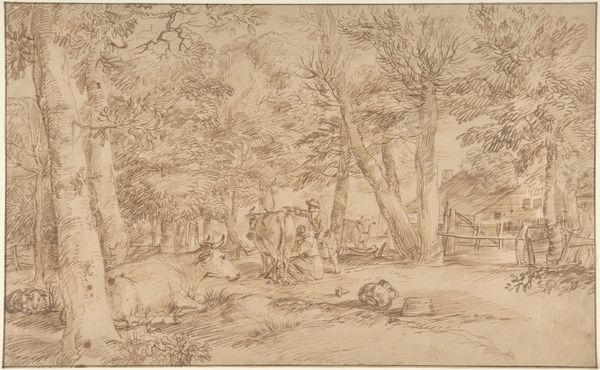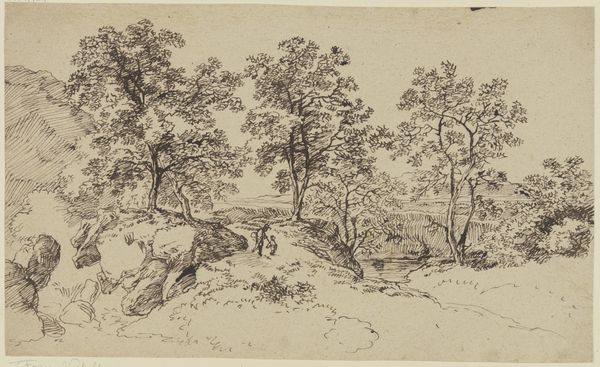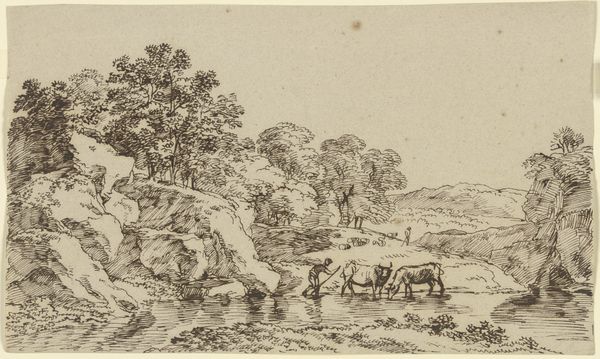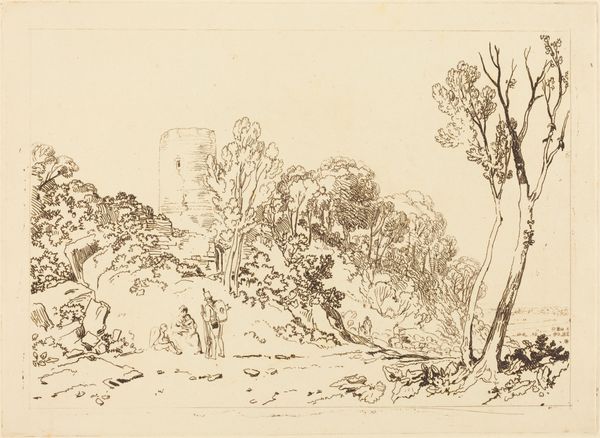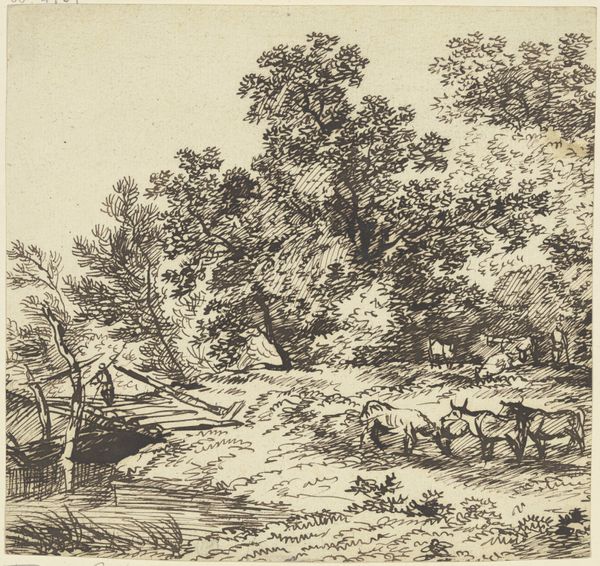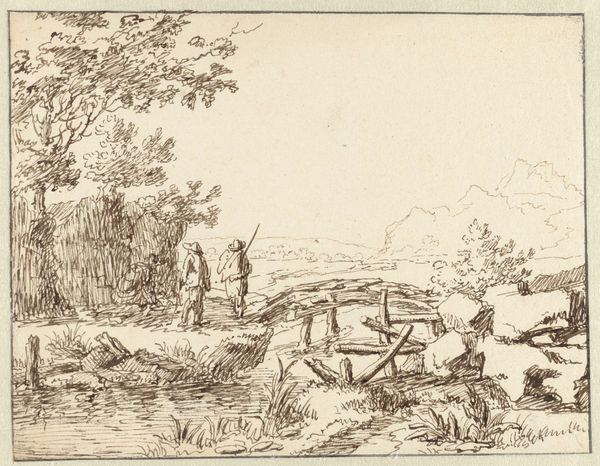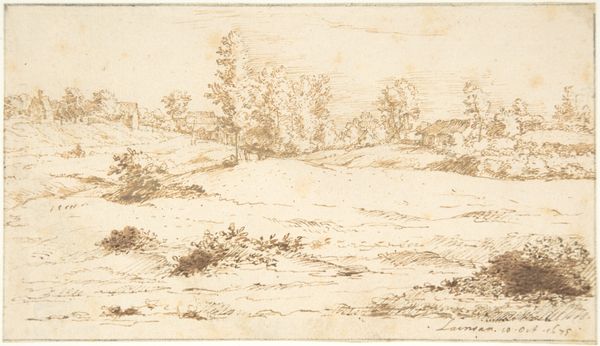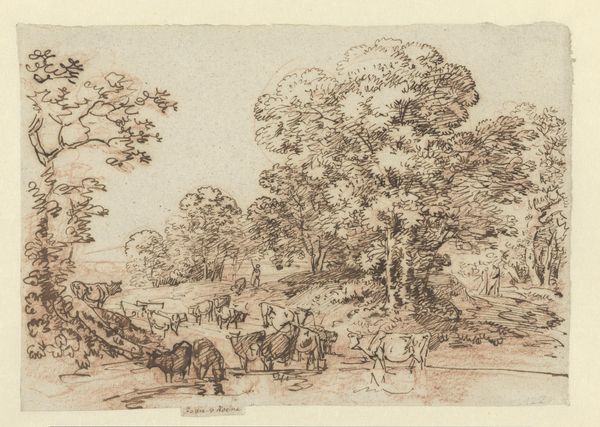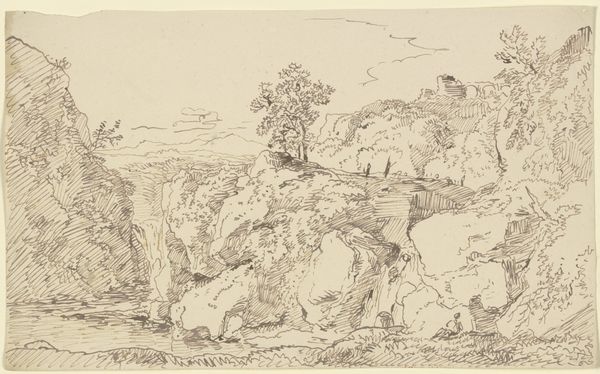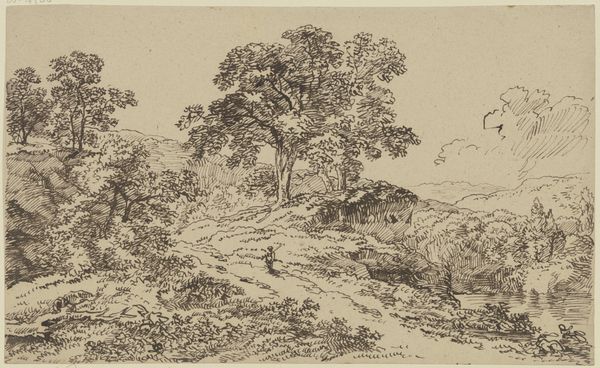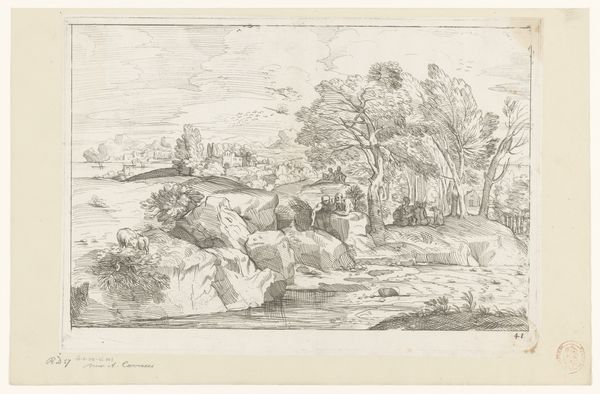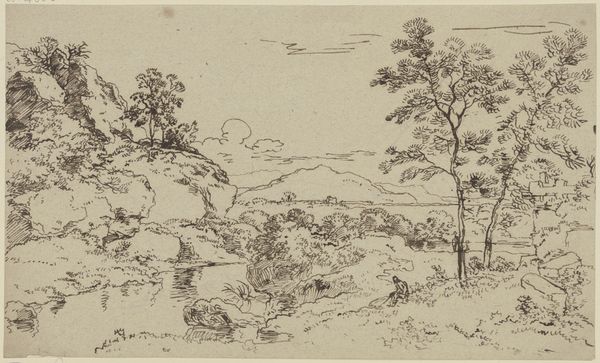
drawing, ink, pencil
#
drawing
#
ink drawing
#
ink painting
#
pen sketch
#
landscape
#
etching
#
ink
#
romanticism
#
pencil
Dimensions: 189 mm (height) x 301 mm (width) (bladmaal)
Editor: This is J.C. Dahl's "Landscape with Remains of a Dolmen," created in 1814 using ink and pencil. There’s something so melancholic about this scene, with those ancient stones in a field under looming trees. What stands out to you in this work? Curator: Well, seeing this landscape, particularly its subject, transports me immediately to considering the rise of national romanticism at the time. Notice how Dahl chooses not just a landscape, but a landscape marked by the vestiges of the distant past. Editor: That’s interesting. So, it's more than just pretty scenery? Curator: Exactly. Think about what a "dolmen" represents. It is a relic of a pre-Christian, pre-national past. To depict it suggests an engagement with questions of national identity and the deep roots of a people, as well as the public function of artworks in displaying identity. How might portraying ancient history shape viewers' contemporary national sentiment? Editor: So by showing this old monument, Dahl might be trying to connect the viewer to a shared history and culture, maybe to build a stronger sense of national unity? Curator: Precisely! And that intersects with how art institutions, like the museum that houses this drawing today, also shape how we understand that history. It raises all sorts of interesting questions about national identity, who gets to define it, and how art participates in those conversations. Editor: I hadn't considered that. It makes you wonder what "national identity" meant back then, and how it has changed since. Curator: It highlights the complex interplay between art, history, and nation-building – things I certainly look at differently now!
Comments
No comments
Be the first to comment and join the conversation on the ultimate creative platform.
